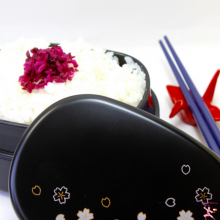Traveling Gluten-Free in Japan
So you’re heading to the Land of the Rising Sun. Japan, where gluten-free rice reigns supreme.
Easy peasy gluten-free. Right? Depends if you’re a glass half full or empty sort of person.
Let’s start with sushi:
Fresh fish is fine.
Japanese sticky rice is gluten-free (and absolutely delicious!)
Miso soup is served with most Japanese restaurant meals. Miso is sometimes gluten-free. (Miso is made of fermented beans – soybeans, azuki beans, and chickpeas. Millet, rice and quinoa are used in the process. That’s fine. But, barley, wheat and rye are also used.)
Soy sauce is mostly wheat based in Japan. Solution? Bring small packets of Tamari.
OR If you are traveling in Central Japan (the Chuubu district) or Nagoya, you are in Tamari territory.
The star of hot wasabi paste is a root. Nonetheless, it is often mixed with wheat.
Dashi soup – when homemade with bonito flakes and konbu kelp and water you’re all right. In other circumstances, present the card below.
Be Aware of:
“Crab”
Stay away from anything resembling crab unless you are 100% certain it’s the real thing. Fake crab is crawling with wheat. It’s seen in onigiri and Japanese bento lunch boxes.
“Buckwheat noodles”
Japanese restaurants may advertise buckwheat noodles on the menu. Nice if the noodles were made entirely of buckwheat. However, to keep costs down, most soba noodles contain some wheat.
“Tare Sauce”
Tare is a sauce commonly slathered atop skewered chicken (yakitori.)

